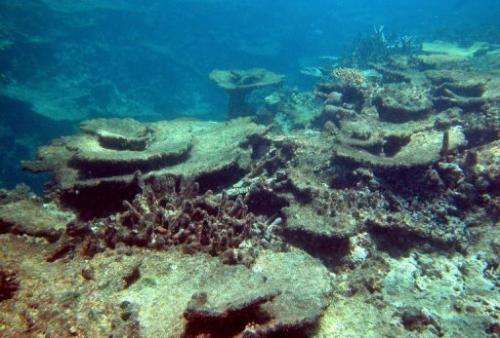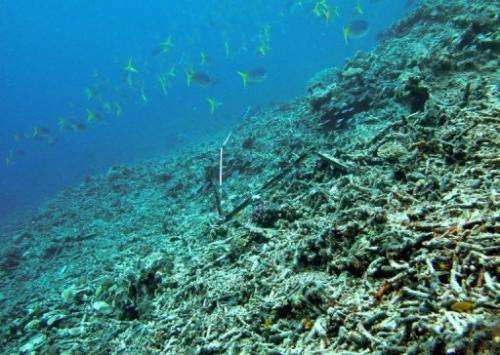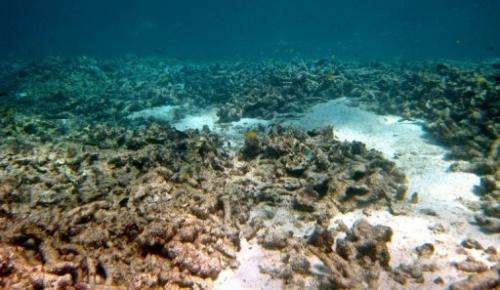Australia scientists tackle reef-killing starfish

An Australian research team said Monday they have found an effective way to kill the destructive crown-of-thorns starfish, which is devastating coral reefs across the Pacific and Indian oceans.
The discovery by James Cook University's Centre of Excellence for Coral Reef Studies in Queensland state comes after a study showed the Great Barrier Reef had lost more than half its coral cover in the past 27 years.
Outbreaks of the large, poisonous and spiny starfish, which feast on coral polyps, was linked to 42 percent of the destruction.
Researchers said they have developed a culture that infects the starfish with bacteria and can destroy them in as little as 24 hours.
The bacteria also spreads to other starfish that come near or into contact with an infected individual.
The next step will be tests to see if it is safe for other marine life, particularly fish.

"In developing a biological control you have to be very careful to target only the species you are aiming at, and be certain that it can cause no harm to other species or to the wider environment," said Morgan Pratchett, a professor at the centre.
"This compound looks very promising from that standpoint—though there is a lot of tank testing still to do before we would ever consider trialling it in the sea."
Outbreaks around tourist sites in Australia are currently controlled using a poison injection delivered by a diver to each starfish.
If the new culture is found to be safe, it would only need a single jab into one starfish, enabling a diver to kill as many as 500 of the creatures in a single dive.
Another scientist from the centre, Jairo Rivera Posada, said that over the past 50 years the starfish had caused more damage to reefs than bleaching.
"There were massive outbreaks in many countries in the 1960s and 1980s—and a new one is well under way on the Great Barrier Reef," he said, highlighting the urgency of tackling the threat.
"In the current outbreak in the Philippines they removed as many as 87,000 starfish from a single beach," he added.
"This gives you an idea of the numbers we have to deal with."

Posada said other fresh crown-of-thorns outbreaks have been reported from Guam, French Polynesia, Papua New Guinea and the central Indian Ocean.
Research released last week by the Australian Institute of Marine Sciences warned that coral cover on the heritage-listed Great Barrier Reef—the world's largest—could halve again by 2022 if trends continued.
As well as starfish, intense tropical cyclones and two severe coral bleaching events had been responsible for the damage.
The study pinpointed improving water quality as key to controlling starfish outbreaks, with increased agricultural run-off such as fertiliser along the reef coast causing algal blooms that starfish larvae feed on.
The Centre of Excellence for Coral Reef Studies scientists agreed.
"Any attempts to control these outbreaks will be futile without also addressing the root cause of outbreaks, including loss of starfish predators as well as increased nutrients that provide food for larval starfishes," they said.
Last week, the Australian government admitted the Great Barrier Reef had been neglected for decades, but said it had contributed hundreds of millions of dollars to address the issues over the past five years.
(c) 2012 AFP


















